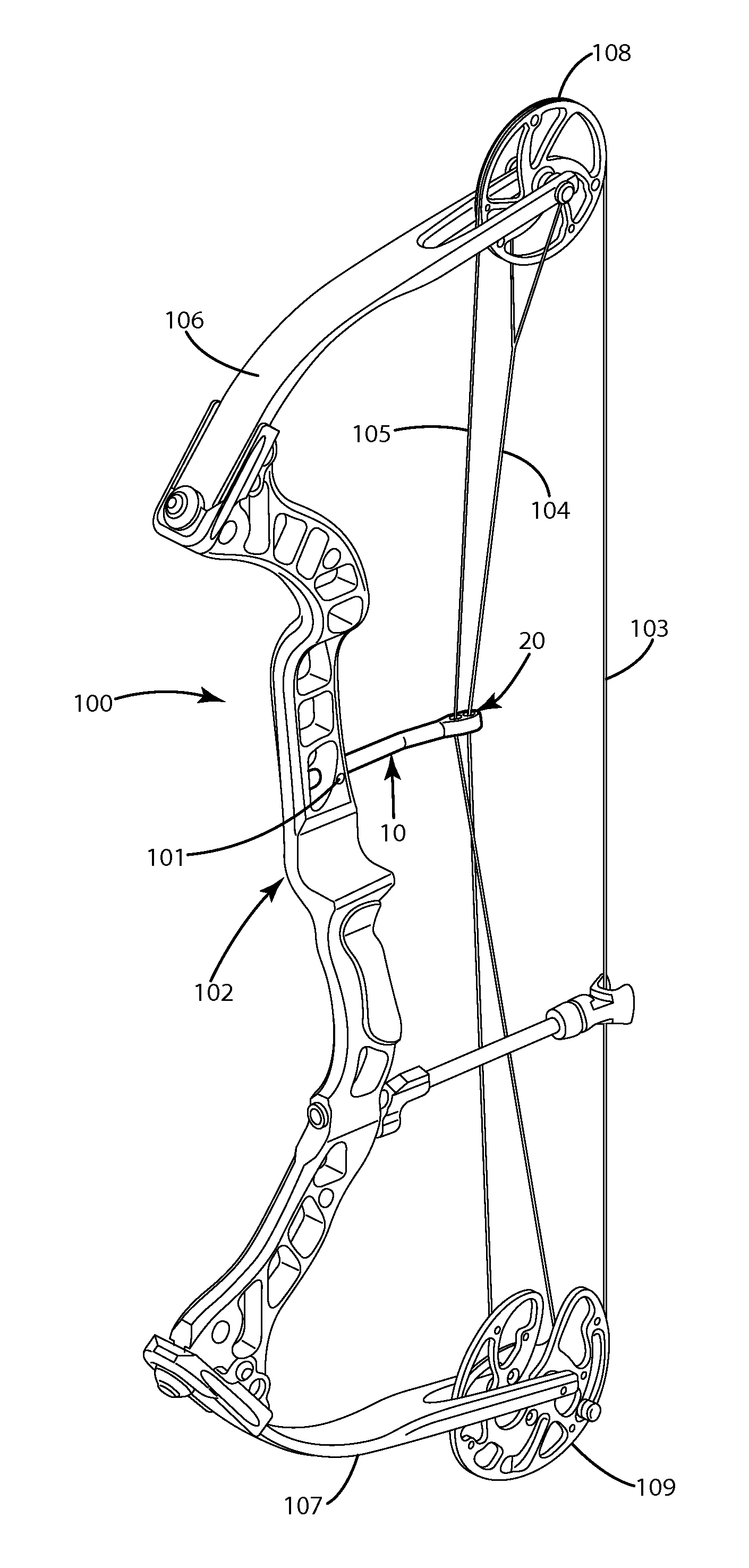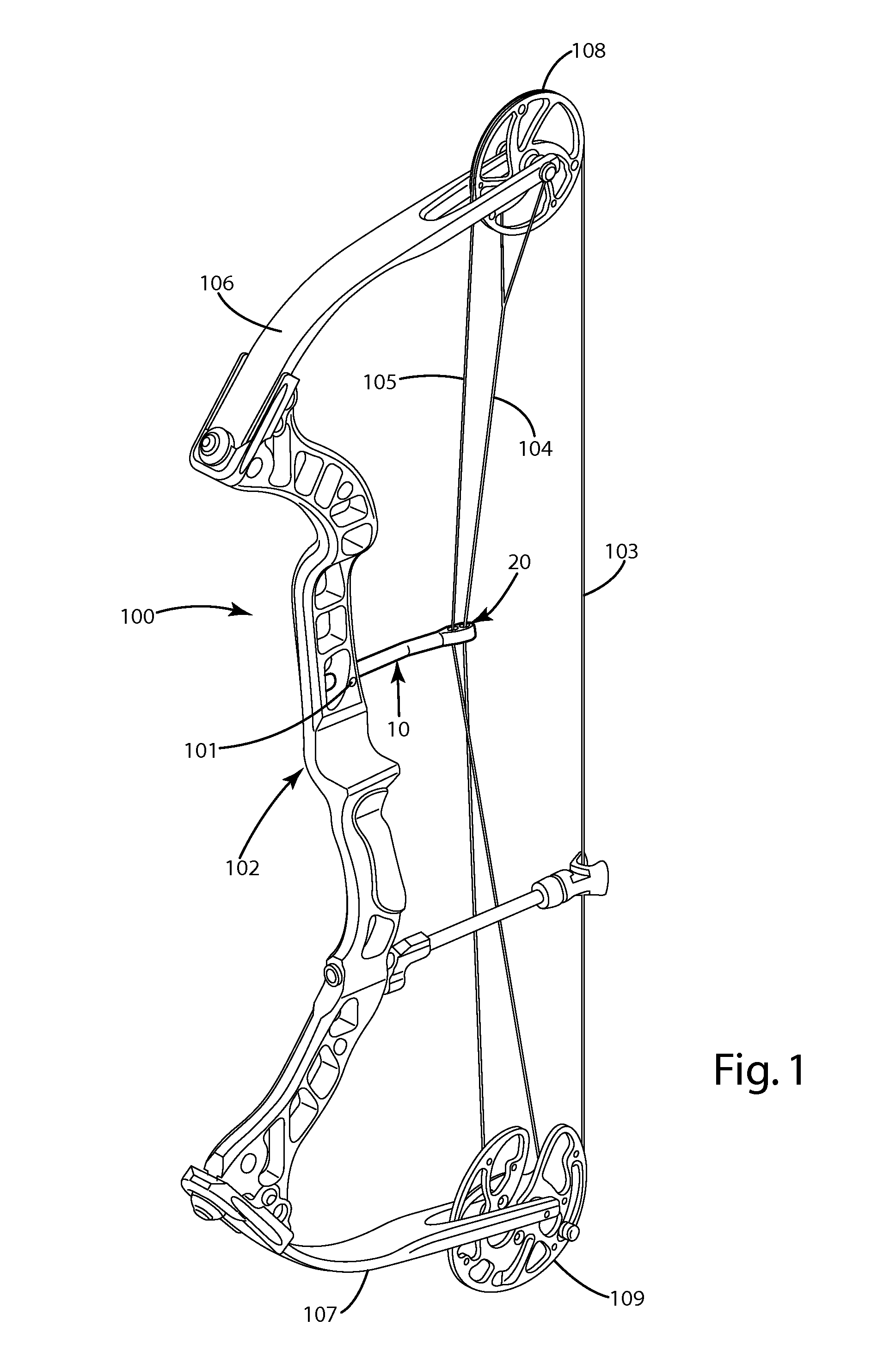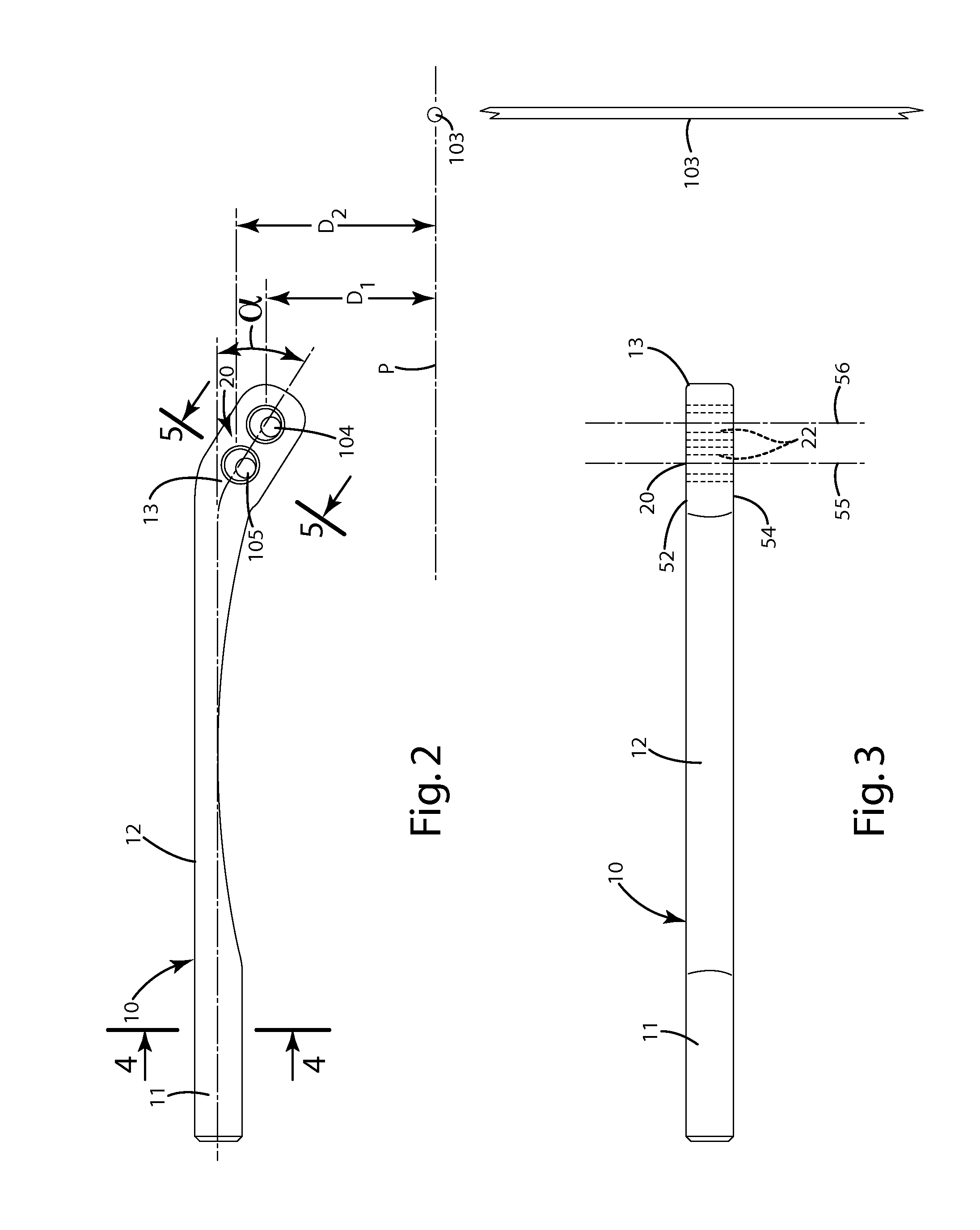Cable guard and guides for archery bows
a cable guard and guide technology, applied in the field of archery bows, can solve the problems of cam leaning out of vertical alignment, cable wear, cam leaning, etc., and achieve the effect of reducing cam leaning, limb twisting, and/or cable wear
- Summary
- Abstract
- Description
- Claims
- Application Information
AI Technical Summary
Benefits of technology
Problems solved by technology
Method used
Image
Examples
first alternative embodiment
III. First Alternative Embodiment
[0109]FIGS. 6-8 illustrate the first alternative embodiment of the cable guard generally designated 110. This embodiment is similar to the above embodiment in structure and operation with a few exceptions. For example, the riser end 111 is circular in cross section and is provided with a flattened section or notch 114. A set screw 101, threaded in the riser 102, engages the notch 114 to retain the cable guard 110 in a fixed, generally immovable configuration relative to the riser. Other mechanisms can be used to secure the cable guard 110 to the bow 100. For example, the cable guard 110 can be threaded on its riser end 111 which can engage a corresponding threaded hole in the riser 102. Other optional fasteners, such as clamping devices, can be included on the riser, and can hold the cable guard 110 fixedly joined with the riser 102.
second alternative embodiment
IV. Second Alternative Embodiment
[0110]FIGS. 9-11 illustrate the second alternative embodiment of the cable guard generally designated 210. This embodiment is similar to the above embodiments in structure and operation with a few exceptions. For example, the riser end 211 is rectangular in cross section and is provided with two through, or optionally threaded, holes 214A and 214b for the purpose of mounting and securing the guard 210 to the side of the riser 102. Depending on the configuration of the holes in the two members, the guard 210 may be mounted to the riser 102 using either screws or bolts. Optionally, the guard 210 may be secured by other fasteners such as bolts positioned in corresponding through holes in the riser 102 and the front portion 211 of the guard 210. Optionally, screws or similar devices may be used, positioned in through holes in either the riser 102 or the front portion 211 of the guard 210 and engaging threaded holes in the opposite member.
third alternative embodiment
V. Third Alternative Embodiment
[0111]A third alternative embodiment of the cable guard is shown in FIG. 12 and generally designated 310. This embodiment is similar to the above embodiments in structure and operation with a few exceptions. For example, this cable guard 310 is joined with a mounting bracket 340. The mounting bracket 340 includes a boss 341 adapted to be inserted into a bore of the bow riser 102. Optionally, the boss 341 can be held in the bore of the riser 102 by a set screw as described above, or other fasteners. The mounting bracket also can include an offset portion 342 that extends away from the boss 341. This offset portion 342 can define a bore 343 and, optionally, a threaded hole that accepts a set screw 350 for retaining the cable guard 310 in the mounting bracket 340. The axis of this bore 343 can be offset from the axis of the boss 341. The bore 343 can be sized to provide a slip fit for the riser end 311 of the cable guard 310.
[0112]Movement in the directio...
PUM
 Login to View More
Login to View More Abstract
Description
Claims
Application Information
 Login to View More
Login to View More - R&D
- Intellectual Property
- Life Sciences
- Materials
- Tech Scout
- Unparalleled Data Quality
- Higher Quality Content
- 60% Fewer Hallucinations
Browse by: Latest US Patents, China's latest patents, Technical Efficacy Thesaurus, Application Domain, Technology Topic, Popular Technical Reports.
© 2025 PatSnap. All rights reserved.Legal|Privacy policy|Modern Slavery Act Transparency Statement|Sitemap|About US| Contact US: help@patsnap.com



